Design made of animal products on show in Formafantasma exhibition
Cow-bladder lights, fish-skin stools and plastic made of beetles all feature in an exhibition of work by Eindhoven design duo Formafantasma.
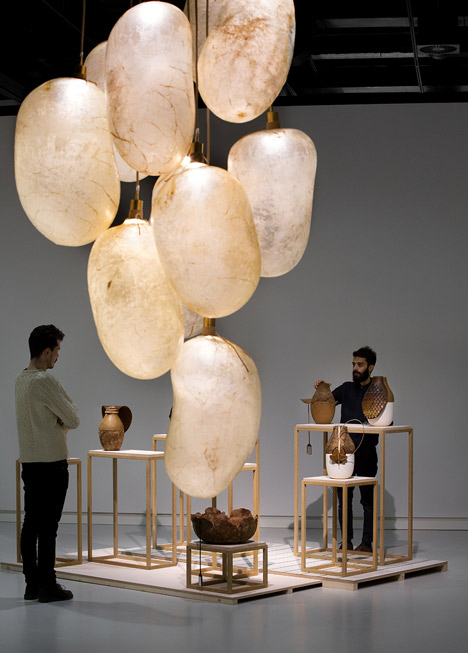
The Prima Materia exhibition, at the Stedelijk Museum in the Dutch city of 's-Hertogenbosch, looks back at work by Italian-born designers Andrea Trimarchi and Simone Farresin of Formafantasma.
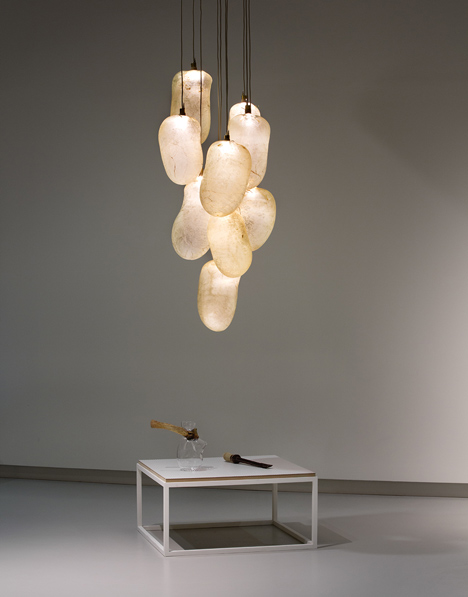
Their first retrospective encompasses four years of bizarre material experiments, which include creating products using waste from the food industry and baking tableware from culinary ingredients.
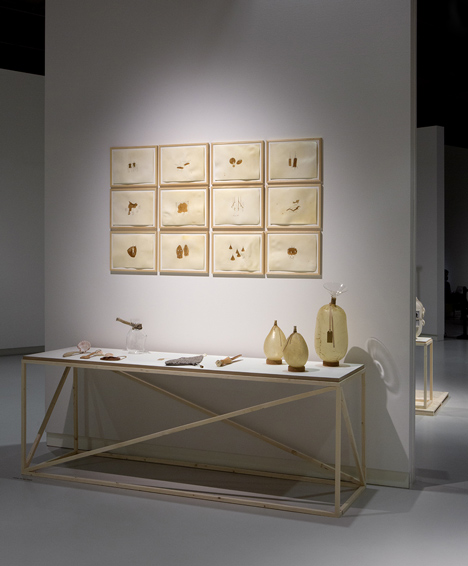
It spans from their Design Academy Eindhoven graduation project Moulding Tradition, which looks at the culture of craft in Caltagirone, Sicily, to more recent charcoal inserts that purify tap water in blown-glass containers.
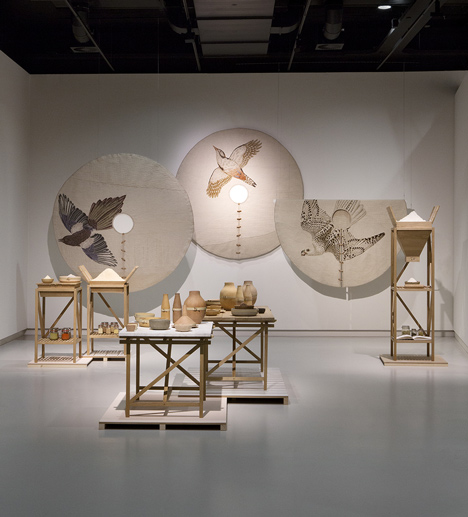
Ranges of objects such as the Botanica vessels made from combinations of natural polymers are presented as complete sets.
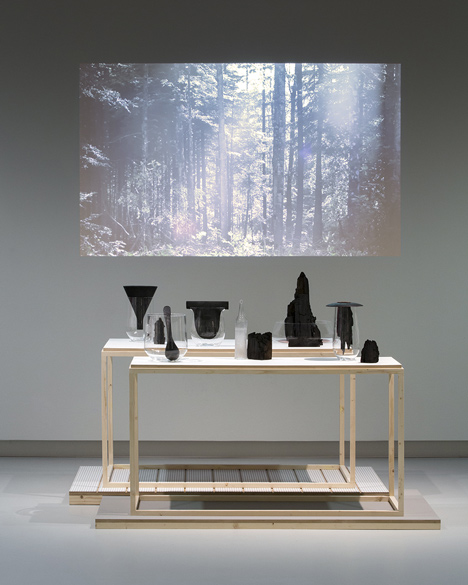
Fish-skin hot water bottles, boar-fur brushes, plus lights and water containers made of inflated cow bladders, all included in the Craftica collection commissioned by fashion house Fendi, are also on show.
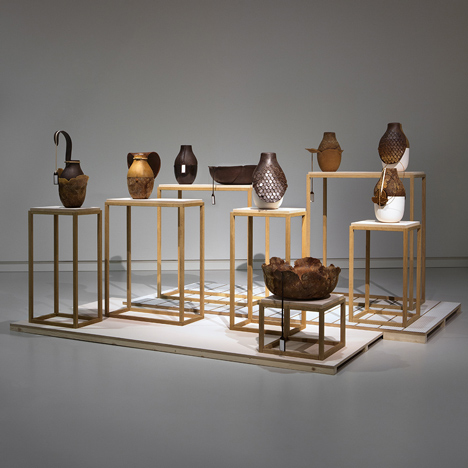
The exhibition is organised in two parts. Videos, sketches and material samples along the entrance corridor give a behind-the-scenes look at the duo's work processes before the finished pieces are viewed in the main space.
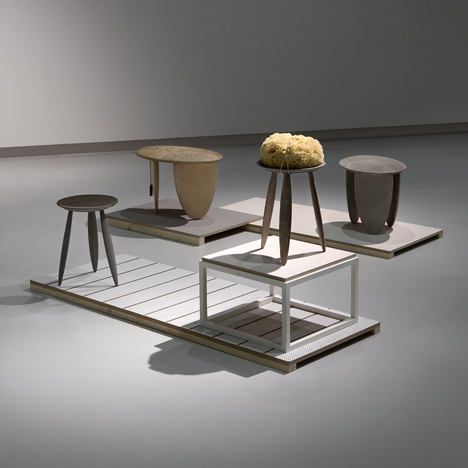
"We wanted the exhibition to be more than just about the final pieces or the making of the objects," Trimarchi told Dezeen. "It was important to show how our projects are 'vessels', and show the context and concept behind the work without being too literal."
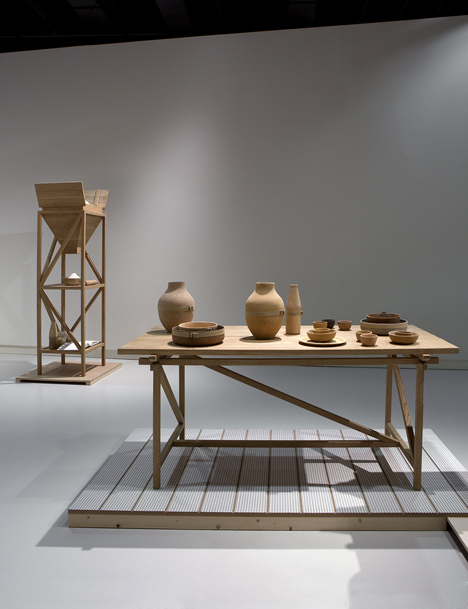
The designs are displayed on simple wooden tables and stands, arranged in clusters around the gallery. The exhibition opened on 15 February and runs until 15 June. Photography is by Inga Powilleit.
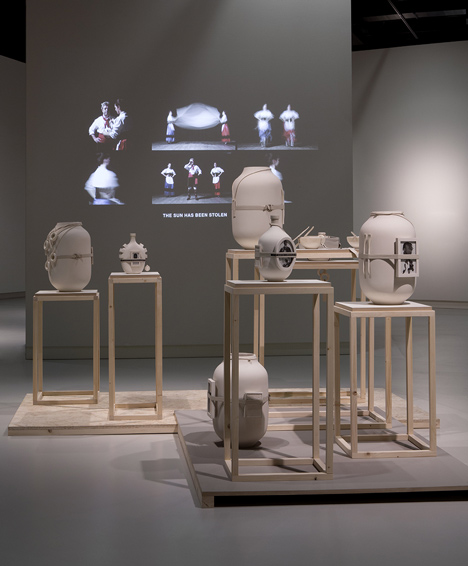
Read on for more information from the museum:
Prima Materia
- design by Studio Formafantasma
Exhibition 15 February - 15 June 2014
After Wieki Somers, Maarten Baas and Scholten & Baijings, the Stedelijk Museum ’s-Hertogenbosch presents the design duo Studio Formafantasma: Andrea Trimarchi and Simone Farresin– two Italian designers from Eindhoven.
The exhibition Prima Materia - design by Studio Formafantasma is the first survey of the oeuvre of Studio Formafantasma. Since graduating from the Design Academy Eindhoven, these two Italian designers have received invitations from all over the world for their unusual use of material, forms and design concepts.
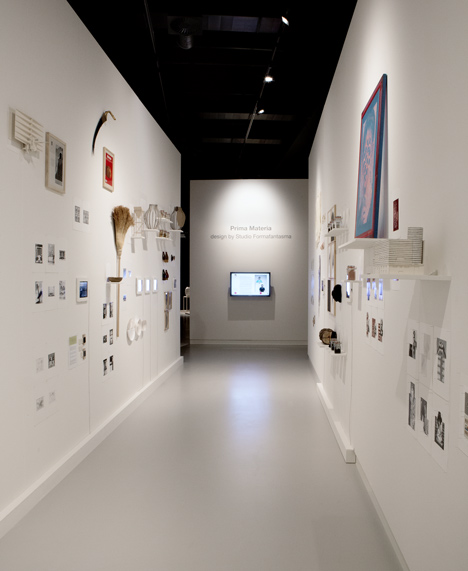
Studio Formafantasma is highly productive: within a period of five years they have presented 14 projects and collections, worked for design labels like Fendi, Droog and Vitra Design Museum, and put on presentations during the Salone del Mobile in Milan, Art Abu Dhabi and Design Miami Basel. Museums such as the Victoria and Albert Museum in London and the Art Institute of Chicago have purchased their work. This retrospective will focus not only on objects and installations but also on the creative process of Studio Formafantasma.
The title of the exhibition Prima Materia refers to alchemy: the transformation of everyday raw materials into precious goods. Andrea Trimarchi and Simone Farresin do something similar as designers. An extensive research and work process results in products and installations that raise questions about the role of industry, globalisation and sustainability. Thus the Botanica collection arose from the question of what plastics can be made of when there is no more oil. For this purpose they developed their own vegetable polymers (plastics) for making vases, bowls, a coffee table and lamps.
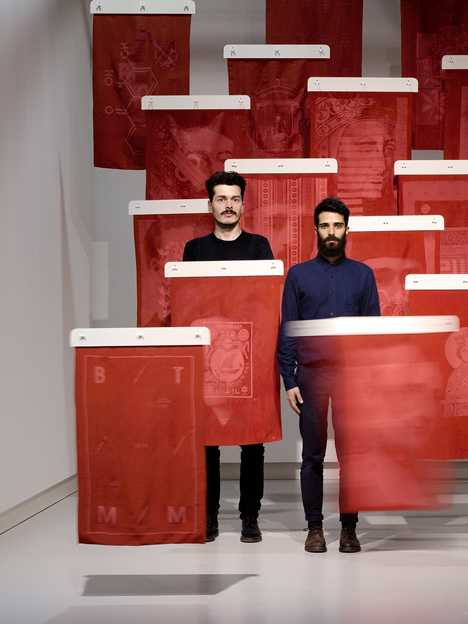
The designs of Studio Formafantasma offer an alternative vision to today's consumer society and the role that design plays in it. Their unique, handmade products (table service made of a flour based material, stools made of fish leather and sea sponge, bottles made of resin) are statements about material and function. By opting for natural materials and pre-industrial (traditional) techniques and combining them with new possibilities of use, Studio Formafantasma makes suggestions for an alternative, democratic design method: what they offer is a kind of manual for getting to create yourself.